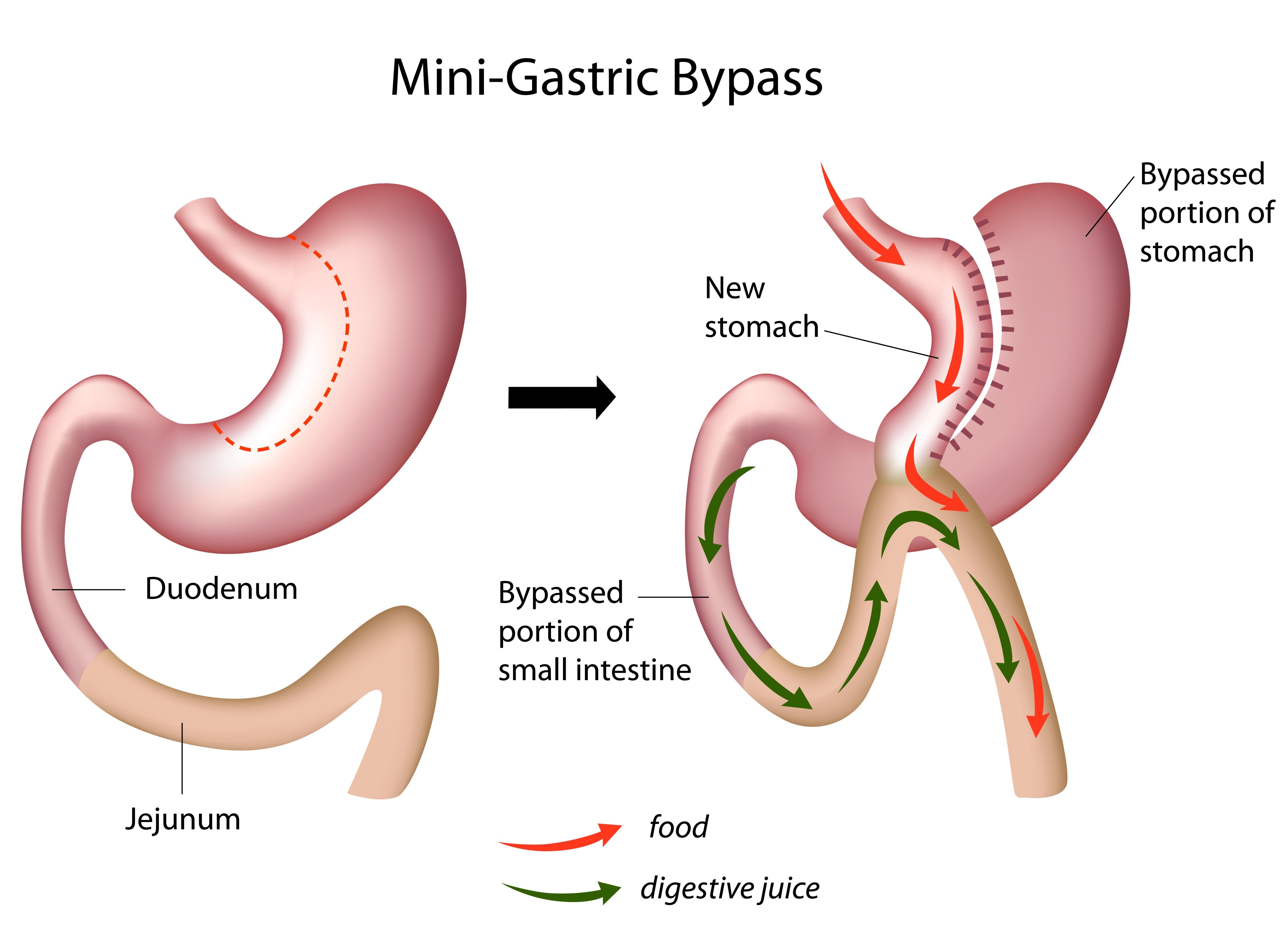Mini-Gastric Bypass (MGB)
The stomach is divided with a laparoscopic stapler. Most of the stomach is no longer attached to the esophagus and will no longer receive food. Your new stomach is much smaller and shaped like a small tube. Between 150 to 200 cm of intestines are bypassed. The surgeon will attach the remainder of the intestines to the new stomach. Food now flows into your small tub-like stomach and then bypasses between 150 to 200 cm of intestines where it resumes the normal digestive process in your remaining intestine.
In addition to its great results on weight loss, the mini-gastric bypass is an excellent procedure for type 2 diabetes, even in the non-obese patients, with high remission rates.
